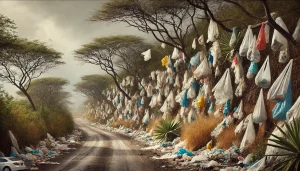 In 2011, Maui County made headlines as one of Hawaii’s leaders in banning single-use plastic bags. The goal was clear: reduce plastic waste, protect the island’s natural beauty, and keep the oceans clean for marine life. Over a decade later, it’s worth asking—has the ban worked?
In 2011, Maui County made headlines as one of Hawaii’s leaders in banning single-use plastic bags. The goal was clear: reduce plastic waste, protect the island’s natural beauty, and keep the oceans clean for marine life. Over a decade later, it’s worth asking—has the ban worked?
On the surface, the answer is yes. Beaches and parks in Maui have seen a noticeable drop in the number of discarded plastic bags. Marine life, such as turtles and fish, now face less risk of ingesting or getting entangled in plastic. For an island dependent on tourism and its stunning natural environment, this is a big win.
But let’s dig a little deeper. The ban replaced single-use plastic bags with reusable options, like thicker plastic or paper bags. While these are sturdier and designed to be reused, their production often requires more energy and resources. In fact, some studies suggest that if these bags aren’t reused multiple times, their environmental footprint might outweigh that of traditional plastic bags.
 There’s also the matter of shifting behaviors. Many Maui residents and visitors have embraced reusable totes, which has helped reduce waste. However, the rise of other single-use plastics, like food containers and packaging, continues to challenge pollution efforts.
There’s also the matter of shifting behaviors. Many Maui residents and visitors have embraced reusable totes, which has helped reduce waste. However, the rise of other single-use plastics, like food containers and packaging, continues to challenge pollution efforts.
The verdict? Maui’s plastic bag ban is a step in the right direction. It’s raised awareness about plastic pollution and encouraged locals and tourists alike to rethink their consumption habits. However, it’s just one piece of a much larger puzzle. To truly tackle plastic pollution, Maui—and the world—needs to expand bans to other single-use plastics, invest in eco-friendly alternatives, and double down on community education.
In the meantime, every small change matters. So, bring your reusable bags, and let’s keep Maui beautiful!

Many of our previous renters have used the reusable Kihei Rent A Car bags provided as gifts to our loyal customers. We support banning plastics bags!

Reusable bags are abundant and inexpensive online. Many local stores sell bags for a couple bucks.


